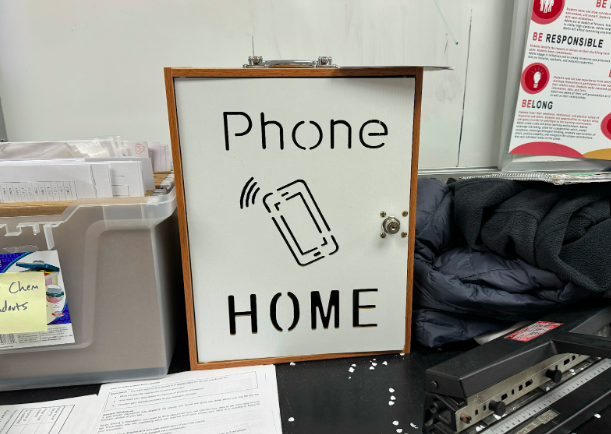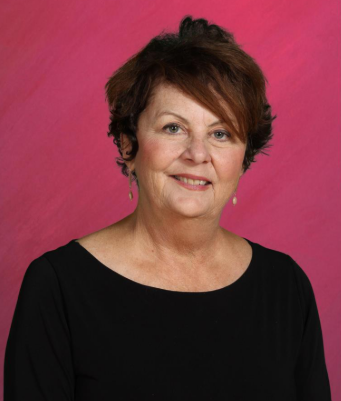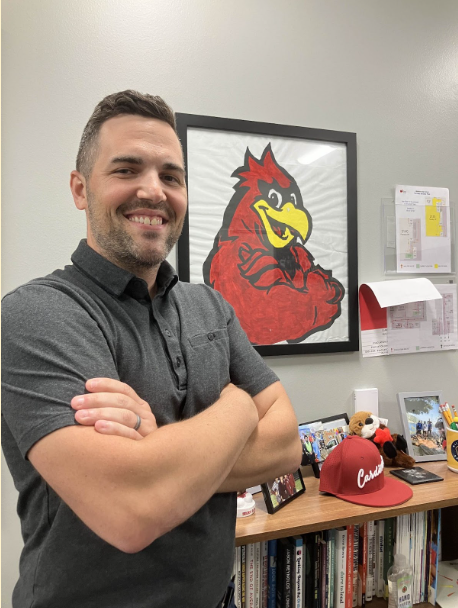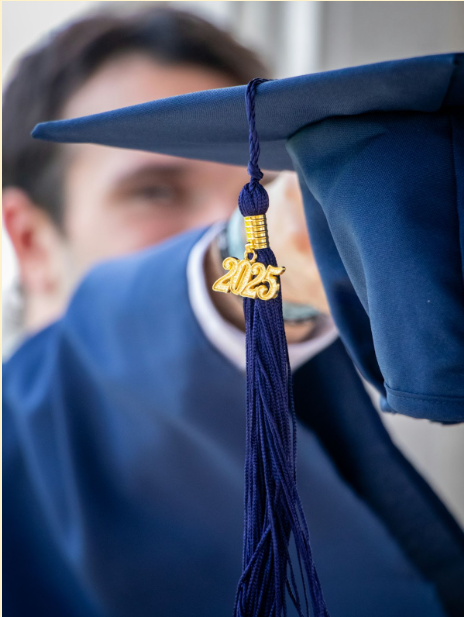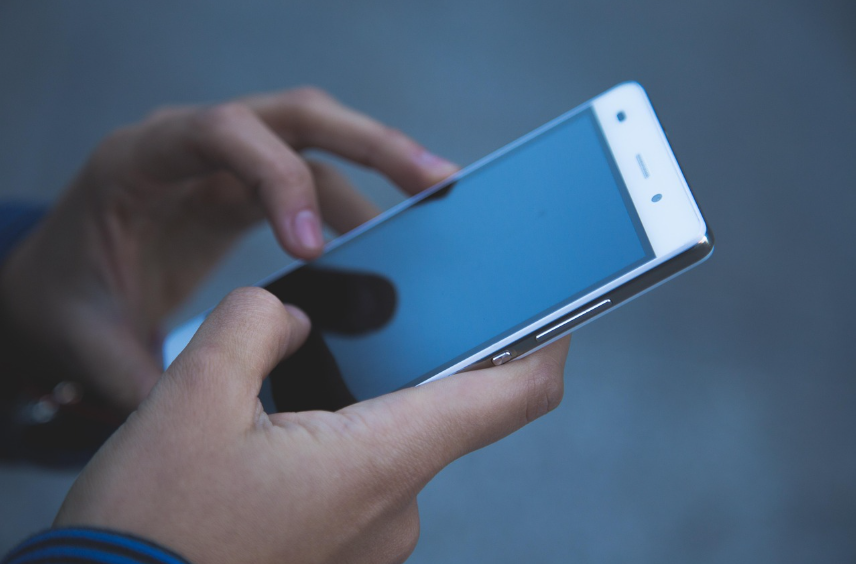Rumors have been circulating Middleton High School (MHS) about the new phone policy for the 2024-2025 school year. Is it a full-school phone ban, lunch included? Will there be harsh punishments for students caught using their phones? Is this plan going to affect communication with parents, coaches and friends? What about student safety in case of an emergency? The plan is now close to being finalized, and answers are available to MHS students’ burning questions. The reality of the policy for next year is far less restrictive than many students may have believed, and has the potential to benefit both students and teachers in more ways than one.
Several components have contributed to the creation of stricter phone policies at MHS. Beyond the research cited by administrators regarding phone usage and education, MHS teachers also feel that further policies would streamline phone rules, making it easier for students and teachers alike.
Math teacher Aaron Stutz, who has 20 years of teaching experience, feels confident in his ability to manage phones in the classroom, “but brand new teachers don’t have the same tricks in their bag, and it’s a lot harder,” he said. “I think my guess is a lot of younger teachers would really like something building-wide to make it a little easier.” He also notes that the new strictness of the policy may reflect teacher frustration with trying to communicate with students, but feeling “like they’re talking to a wall.”
The difficulties experienced by MHS teachers and staff have motivated those like MHS science teacher Tim Berto to become an active participant in the decision making. The teacher cell phone committee was formed this school year as an initiative to create a better school-wide phone system. As part of the teacher-run cell phone committee, Berto recognizes the importance of being present in the process.
“If you ask any teacher what the number one challenge to education is right now, it’s our devices, it’s our phones,” he said. “And so, [the cell phone committee] came out of a need to have something concrete and uniform, and there are teachers from each department, sort of an open invite for anyone who’s interested. I’ve just noticed phone use has been increasing, so I was curious to be part of the decision-making team there. Something was going to happen so I wanted to be a part of it rather than just kind of be along for the ride.”
The COVID-19 pandemic has been cited by teachers and researchers as a prominent factor in increased phone usage among students, which has impacted both social behaviors and interactions with the learning environment. From safety concerns to social media, phones have become a device students are more dependent on.
“It was COVID. COVID absolutely did a lot of mental… a lot of trauma to kids,” MHS art teacher Peter Ludt said. “Trauma to teachers too, but like – because we were all sheltered in place in our bedrooms, or whatever, trying to do school, phones became this crutch.”
Across the board, teachers and administrators have recognized that less time spent on phones has a positive effect on both the learning environment and student success. Some MHS teachers have implemented measures in their classrooms to mitigate phone distractions by physically removing the phone from the student; this is often in the form of “phone boxes”.
“There really is an addiction level of connection to our devices, and that’s not just true of students and high-schoolers– that’s true of adults, I notice that in myself too– and so being intentional about when we put it away during classroom time has helped a lot,” Berto said.
Berto has noticed that students appreciate these measures as well. “Students this year have actually expressed that they like it when they don’t have their phones because it takes away that responsibility from them. So I do think there is an underlying relief sometimes that comes with that device being away, even if it’s hard to part with it in the first place,” he said.
In order to streamline phone policies across departments and classrooms, MHS staff and administrators have brainstormed a new phone policy to be implemented starting in the 2024-25 school year. Administrators oversaw parent and student meetings in order to inform small groups about the future plans, and to gather feedback. Dean of Students Erik Johnson led the Student Cell Phone Committee meeting on May 1, 2024, with eight students from various grades in attendance.
Johnson explained the plan as “80 percent finalized” and described the following protocol:
Phones are allowed to be out during passing periods and lunch, but must remain off and away during class time. If a student has their phone out without permission, they will be required to turn it in at the office for the remainder of the day. They will be able to pick up their phone at the end of the day, but must return their phone to the office for the next two mornings. Sequential rules are as follows:
- First offense: Phone is turned in for two days
- Second offense: Phone is turned in for five days
- Third offense: Phone is turned in for 20 days
Furthermore, phone breaks will not be allowed during class in the interest of students participating in other enrichment activities.
While this plan has potential to make a big difference in the lives of students and teachers, reducing the amount of class time spent on regulating phone use and enabling students to engage more fully with classwork and with each other, there are a number of valid concerns that students have brought up. One such concern, mentioned by a number of students in the committee meeting on May 1, is the idea that without the chance to learn to regulate their own phone use, students will be unprepared to discipline themselves in college, where phones will not be collected or restricted in any way.
Berto, a chemistry teacher with eight years of experience, addresses this issue by proposing that by taking away phones, administrators are giving students an opportunity to experience education free from the hold of an extremely addictive device, and that seeing the benefits of having phones away will help students continue that good habit in college.
“Take something else that’s addictive, like smoking, for example,” he said. “If you tell people ‘it’s on you not to smoke,’ that’s not an entirely fair scenario, and I think it’s the same with phones in classrooms. Having the rule in some ways gives people more of that freedom to do the learning and to see that the outcome when [devices are away] can be beneficial.”
Ludt has a similar stance – he believes seeing the results of class time spent with phones away will be enough to provide students with a recipe for success in college.
“There’s a lot of success that is found when you’re not on your phone and you’re actually getting work done,” he said. “If you can remember that then when you go into college, you’re going to learn real quick when you’re on your phone and not getting work done and [getting] behind.”
Additionally, Ludt emphasizes that “it is not our job to train kids how to manage their phone…my responsibility is to teach you the content that’s in here. And if it means me taking away your phone to do it, then so be it.”
Another common protest against a school-wide policy is the idea that phone use should be left up to the individual. Many MHS students feel that students who choose to spend class time on their phones will suffer the natural consequences; a blanket policy is unnecessary and takes away freedom from responsible students. While this is a valid argument, the years of experience from MHS teachers have given them the ability to look at the big picture and take an educated stance on what is best for all students involved.
“I know there are some students who do a great job of this on their own, but you have to think about our school as a whole,” Berto said. “There’s never going to be a plan that’s perfect for everyone, but I think on the whole what we’ve seen is that phones in class are not helping the majority of our students.”
According to the American Psychological Association, the average attention span has decreased significantly over the past few decades. Ludt deals with the short attention spans of teenagers daily and attributes it, at least to some extent, to the popularity of 15 to 30 second videos that keep the brain hooked indefinitely. “I see it in my classroom, kids are so used to watching something, flipping, watching, flipping; when I’m up there talking, I got ’em [at first]… and then I see after 30 seconds, their brains need something more, something different… I’ve noticed that the chemistry of their brains and how they’re able to engage has changed because of [short videos].”
Cell phones have an addictive nature that has many students trapped. Without help, there are talented students with unlocked potential who are unable to engage in class.
Ludt said, “I’ve found that there’s straight A students… I have some amazing seniors that have an addiction to their cell phones. And I have freshmen that can put their phones away… and so I think that this cell phone policy needs to be a blanket across all subject areas.”
Students and parents alike are concerned about the safety aspects of this phone policy. With school shootings and other emergencies an all too common occurrence across America, parents want to be able to communicate with their children at all times. The goal of this policy is to keep phones off and away during class time. Depending on the teacher, some classrooms will collect phones and some will let students keep their phones in their backpacks. In case of an emergency, either of these options would allow students to quickly gain access to their phones and contact their parents.
The problem arises when considering the punishment aspect of the plan: keeping students’ phones at the office for the entirety of the school day, often for multiple days or weeks. In case of a school emergency or even a family emergency, students whose phones are being kept at the office would not be able to contact family members. However, it is important to consider that while having the ability to call a parent can provide comfort and ease anxiety, often the best way to stay safe in a school emergency is to simply stay with the class and listen to the teacher. Additionally, each classroom is provided with a phone, and parents will always have the ability to call the classroom phone and ask to speak with their student in a family emergency.
This new policy is going to be a big change, and as Ludt says, “it’s gonna be a huge learning curve.” Cell phones and social media are designed to hook the brain, overstimulating dopamine receptors and making it difficult for kids to focus on anything that is not providing constant stimulation. In order to allow students to experience education without the addictive distraction of their cell phones, “we’re gonna have to retrain [their] brains.”
It’s a complicated issue, and coming up with a plan that effectively keeps students engaged without overcontrolling them, thereby fostering a sense of mutual respect rather than a frustrated battle for control, is a huge challenge. This policy will continue to be refined as time goes on, and the hope is that it will ultimately benefit all involved.
“For so many kids, it is absolutely terrifying right now,” Ludt added. “It seems like it’s going to be the end of the world. But, like, it will be okay. Everyone will get through it. It will be rough in the beginning. But at the end of the day, everyone will be better [off].”
The policies detailed in this article are not reflective of the finalized plans of the MHS administration. Contact them directly with any questions concerning the information listed.



